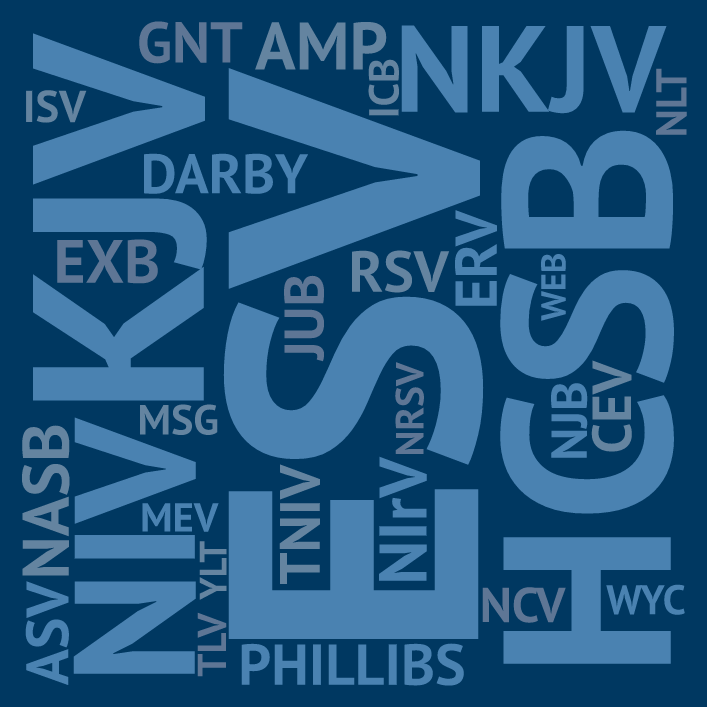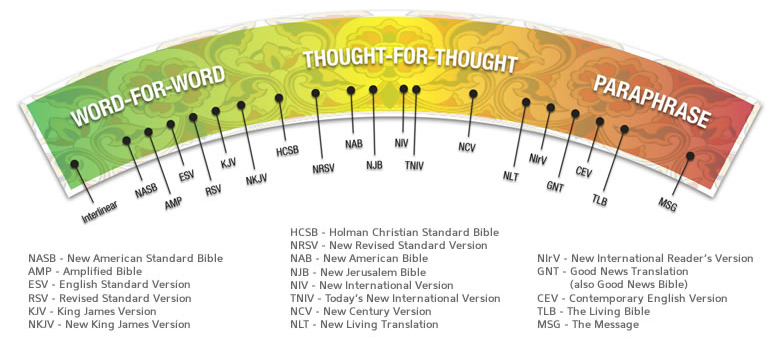In this day and age there are a plethora of different Bible versions available at our fingertips. Not only is any bookstore loaded with multiple versions, but online you can compare more than 50 English language versions. With so many options available, the question arises: How do I know which Bible versions are accurate?
As in everything, the Bible provides direction.
I Thessalonians 5:21 (KJV)
Prove all things; hold fast that which is good.
As workers of the Word, it is our responsibility to put what we read in any version to the test and prove what is right and accurate. No Bible version is perfect. There is nothing in life where we can say, “This is already perfect, I don’t have to even think about it.” God instructs us to study His Word. Every believer’s responsibility is to personally make the Word his or her own and apply it to the best of his or her ability.
II Timothy 2:15 (KJV)
Study to shew thyself approved unto God, a workman that needeth not to be ashamed, rightly dividing the word of truth.
It is my hope that what follows will help you better choose which Bible versions to spend the most time with and help you further your understanding of God’s Word.
To determine if a Bible version is worth a closer look, a couple key pieces of information should be gathered:
- The translation method or philosophy
- The translator(s)’ bias(es)
The first thing to determine is what translation method was used. There are two major methods or techniques used for translating the Bible (and most any other text). Formal Equivalence attempts a “word for word” translation and tries to literally translate the source. Dynamic Equivalence (also called Functional Equivalence) attempts a “thought for thought” or “idea for idea” translation and tries to convey the meaning of the source.
Neither method is all good or all bad. A completely literal translation is often not entirely possible between two languages, and when done, it can lose some meaning and readability. For example, try reading a chapter in an interlinear. In contrast, a completely “thought for thought” translation relies too much on what the translator thinks the meaning to be. In fact, versions on the far end of dynamically equivalent translations are simply called paraphrases. Some examples of this would be The Message or The Living Bible.
The best versions are those that are somewhere in the middle between formal and dynamic equivalence, generally leaning more toward the literal. However, this isn’t to say that some of the more dynamically equivalent translations don’t have sections that are translated excellently because the translators have a great understanding of that section.
The second thing to investigate is the translators’ bias(es). Why did the translator(s) choose to make a new version? When and where was the translation done? From what source(s) was it translated? With what sect(s) or denomination(s) are the translators affiliated? Fortunately, and somewhat surprisingly, Wikipedia provides much of this in one place if you look at the entry for a particular version.
Considering these pieces of information can help you take an informed look at each version and help determine the level of accuracy. As we’ve covered, no single version is perfect. However, spending time reading the same passage in multiple versions can greatly increase our understanding. It is important to not jump to conclusions based on any single version, but take the time to compare between versions and look at the source language as well. Blue Letter Bible, Bible Gateway, and other sites make this much easier than it once was.
So now that we have that background (and disclaimer), here are the versions that I personally prefer and recommend. I grew up reading the King James Version (KJV), and still read it more than any other version. It is a good version of the Bible, but the more archaic language can be a hindrance to many. My overall favorite, and one you will see frequently on this site, is the English Standard Version (ESV). It is one of the more literal versions and is considered as accurate, if not more accurate, than the KJV. But it also presents the text in a clearer and more readable way. I think you’ll find that just by simply reading many passages in the ESV, you will have a clearer understanding than you would by reading the same passage in the KJV and checking a few Greek words.
The following graphic gives a nice and quick view of where different versions fall on the Formal to Dynamic Equivalence spectrum. The graphic gives the impression by the colored gradient that more literal is definitely better, but I wouldn’t hold the color as being too meaningful. There are some good versions in the yellow. That being said, I would generally recommend avoiding paraphrase versions. They, by their very nature, will omit things and state ideas completely based on the translator’s understanding and interpretation of the text.
Now, on to the recommendations. I’ve grouped them by translation method, and have given some notes on a few particular versions below. Happy reading!
Formal Equivalence
- English Standard Version (ESV)
- New King James Version (NKJV)
- King James Version (KJV)
- Amplified Bible (AMP) *
Dynamic Equivalence
- Holman Christian Standard Bible (HCSB) **
- New International Version (NIV)
- J.B. Phillips New Testament (PHILLIPS)
* The Amplified Bible is what is known as an expanded translation. Its translation of the source text is very literal, but it then adds additional information in brackets within the text that is based on research of the source text or based on observations from the context or connections to other passages in the Bible. This of course doesn’t mean everything is completely accurate, but it can shed tremendous light on some verses. Hebrews 13:5 is one of my favorites.
** This translation is gaining popularity for its accuracy and ease of reading. It also does a good job of balancing “word for word” and “thought for thought” translation. In fact, the translators deemed it “optimal equivalence.” Note that a major revision of the HCSB, which was renamed the Christian Standard Bible (CSB) is to be released in March 2017.



